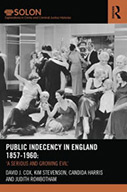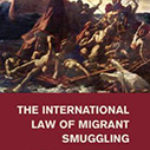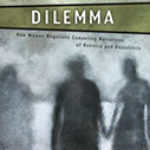Public Indecency in England 1857-1960: ‘A Serious and Growing Evil’

Authors: David J. Cox, Kim Stevenson, Candida Harris, and Judith Rowbotham
Publisher: London: Routledge, 2015. 216p.
Reviewer: Paul Jennings | March 2016
This book is one in a series arising from a collaboration between the publisher and the SOLON consortium which aims to promote studies in law, crime and history. It is co-authored by four scholars, each contributing their various areas of expertise throughout, including aspects of socio-legal studies, criminology, history, and the law. Its subject is what it terms public indecency in England over a period bookended by the Obscene Publications Acts of 1857 and 1959 and the latter’s use in the famous trial of Lady Chatterley’s Lover the following year. Public indecency is taken to cover a very wide range of subjects or behaviours, including, inter alia, indecent books, images, theatrical performances or the cinema; sexual indecency such as indecent exposure or indecent assault; using obscene or profane language; public drunkenness, gambling or vagrancy. Indeed the enormous scope is the key to this reviewer’s main reservation about this overall detailed, informative and readable book.
From the outset, the problematic nature of the concept is made clear by the authors, describing it as ‘a broad and often an apparently vague term’ (p. 1). Despite much discussion, including an introductory chapter devoted to the question of definition, the problems inherent in using such a professedly nebulous concept in its analysis were often evident. It is held to cover acts which are not necessarily illegal, but which become so if in public. Nakedness is the example used, but this applies equally to drunkenness. But some of the acts which they discuss, such as attempted illegal abortion/procuration of miscarriage or indecent acts between men surely were illegal whether in private or public places. Or, approaching the question of definition another way, what constituted decent behavior? This volume suggests that it is that which attested to inner sound moral character, what the higher classes might term civilized behavior or the middle classes respectable. Indecent behavior then was that which was not decent. Decent behavior, according to nostrums of civilization or respectability as understood certainly in the period covered by this book and by its twenty-first century readers, clearly included not swearing, begging, gambling or drinking to excess. The problem is that indecency as a concept has more purely sexual connotations. Entirely unscientifically, I tried this test of meaning on a number of people who confirmed that whilst decency might encompass a wide variety of behaviours, indecency was indeed sexual in some way. But the book then in effect acknowledges as much by devoting a large part of its discussion to just such sexual content in, for example, printed materials, art, photography, the theater, cinema and the radio. It is a discussion, I should add, which contains a great deal of interest and takes up a number of important themes, such as the way in which technology constantly created new outlets for indecency or the way that popular taste was far more comfortable with ‘indecency’ in its shows or on its postcards than society’s moral guardians thought they should be.
The central point, that from the late eighteenth century there was increasing concern for the maintenance of order and certain standards of behavior, is well made. The book traces this in some detail. It includes the campaigns for the reformation of manners and the development of policing up to the establishment of forces throughout the country by legislation of 1856, although the work of Robert Storch (1975 and 1976) or Stephen Inwood (1990) on the aims of early policing might usefully have been included here. With reference to policing, the Criminal Registrar, Samuel Redgrave, wrote in his introduction to the Judicial Statistics in 1857 that they would ‘care for the removal of all demoralizing influences, for the better maintenance of public order and decorum …’ (p. 156). It seems to me that this characterization of the question as one of a combination of the preservation of order and the maintenance of accepted standards of behavior is one which encompasses more effectively the very varied types of behavior with which the authors seek to deal, than does the concept of indecency.
A further example of the problem of using the concept is in the cases of prostitution and drunkenness. The former, comprising soliciting and sex acts in public places, is excluded on the grounds that it was treated by the courts as a form of disorderly behavior rather than as an expression of immorality (plus, according to the authors, the fact that a lot has already been written about it). In contrast, a chapter is devoted to drunkenness. But it is not clear why the one and not the other. Drunkenness was also treated as a form of disorderly behavior, since the offence under the Licensing Act of 1872 was to be drunk in any highway or public place or licensed premises, or drunk and riotous or disorderly, or drunk in charge on any highway or public place of any ‘carriage, horse, cattle or steam engine’ or in possession of a loaded firearm. To these were added drunk and incapable and drunk in charge of a small child in the Licensing Act 1902. The offense in fact combines perfectly the issues of public order and decorum and is more readily comprehensible by this than a concept of public indecency. Even if, as the book demonstrates in lengthy examples, indecency might arise where, for example, a drunken woman stripped herself naked or, as was of course common, obscene language was used.
The chapter on drunkenness raises further issues, touching as it does on a question on which I have done some work (2012), if I may cite it here. Unlike virtually all the other offenses covered in the book, drunkenness was frequently dealt with by the police, as the authors acknowledge. Cases constituted a significant proportion of the work of courts up until the First World War. This is not in itself a problem except that it does suggest drunkenness was something of a special case rather than one of numerous examples of ‘indecent’ behaviour. The chapter has the subheading ‘How the drink problem was resolved’ but it is not clear from the discussion exactly how this happened. The work of Dingle (1972) is cited, but his convincing explanation of the link between rising working-class living standards and reduced drinking is not discussed, nor is the spread of ideals of respectability among working people themselves. Rather, drawing on evidence from Crewe, stress is laid on a shift in police priorities after around 1910 from drunks to motorists, which will have had some effect on the judicial statistics but does not explain what seems to have been an actual decrease in drunkenness. There were in the chapter some minor inaccuracies. It states that until 1901 children could legally purchase alcohol for their own consumption. In fact, spirits had been denied them first in local laws and then nationally from 1872. Beer was then prohibited to those under 13 in 1886. The 1901 legislation raised this to 14, except, as the authors note, in corked and sealed containers, so that they could still buy beer to take home for adults. Children under 14 were excluded from public bars in 1908. Reference is made to legislation raising the age to 16 in 1909 but in fact no further change was made until 1923, when the age became 18.
In its conclusion the book argues that the flexibility and fluidity of the central concept of indecency was the greatest weakness of the campaigns to stamp out indecent behavior. What I found was that these qualities also made it problematic as a concept for an examination of such a diverse range of behaviors, rather than one which combines the concerns over order and behavior as expressed by Redgrave. Where the book is valuable is particularly in its discussion of those behaviors which do indeed fall readily under an easily understood heading of indecency, in relation to books, images, films, theatre or the cinema, for example. It is valuable too in its examination of why attempts to control such indecency often did not work, be it from the reluctance of politicians to legislate or the police to enforce the law. With regard to this in particular, some reference to Stefan Petrow’s (1994) work on London would have been useful. For its discussions of those forms of indecency then in particular, and from its readability, this is a book which I recommend to an academic, student and general audience interested in not only the law, crime and the criminal justice system but social history more broadly. Although it closes in 1960, it provides much food for thought on the subsequent history of indecency. One can only wonder what those who found the McGill’s saucy seaside postcards so offensive, for example, would make of the images readily publically available in the twenty-first century.
Inwood, S. ((1990), ‘Policing London’s morals: the metropolitan police and popular culture, 1829-1850’, The London Journal 15, pp. 129-46.
Jennings, P. (2012), ‘Policing Drunkenness in England and Wales from the Late Eighteenth Century to the First World War’, Social History of Alcohol and Drugs 26:1, pp. 69-92.
Petrow, S. (1994), Policing Morals: The Metropolitan Police and the Home office 1870-1914 (Oxford: Clarendon Press).
Storch, R (1975), ‘The plague of blue locusts: police reform and popular resistance in northern England’, International review of Social History 20, pp. 61-90.
Storch, R. (1976), ‘The policeman as domestic missionary: urban discipline and popular culture in northern England, 1850-1880’,Journal of Social History 9, pp. 481-509.
Paul Jennings, Lecturer in History, University of Bradford, UK


